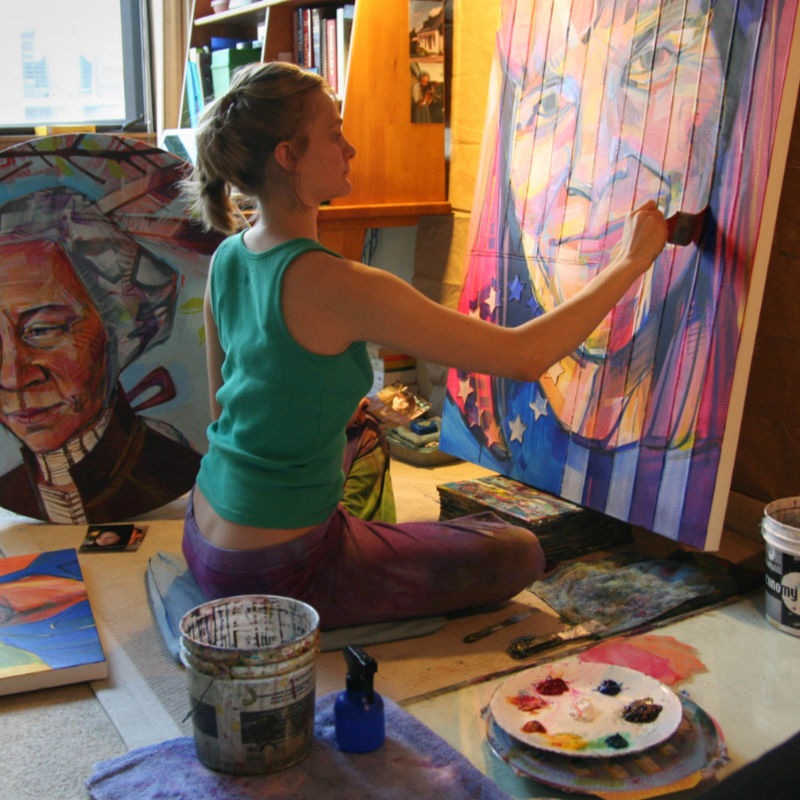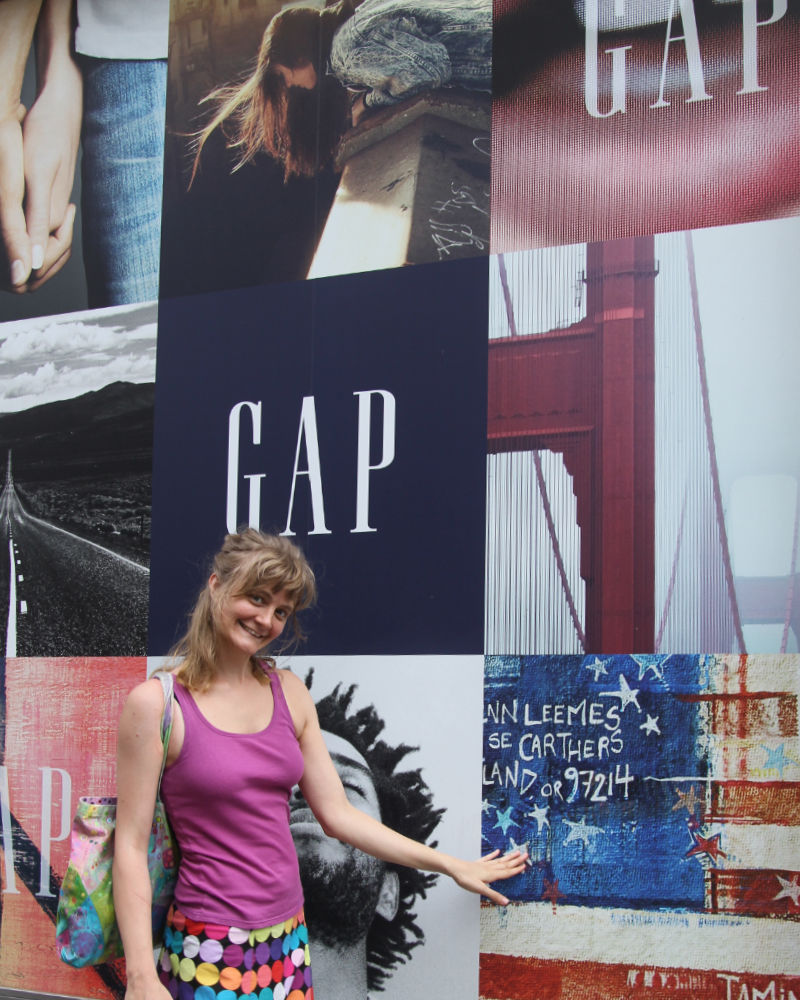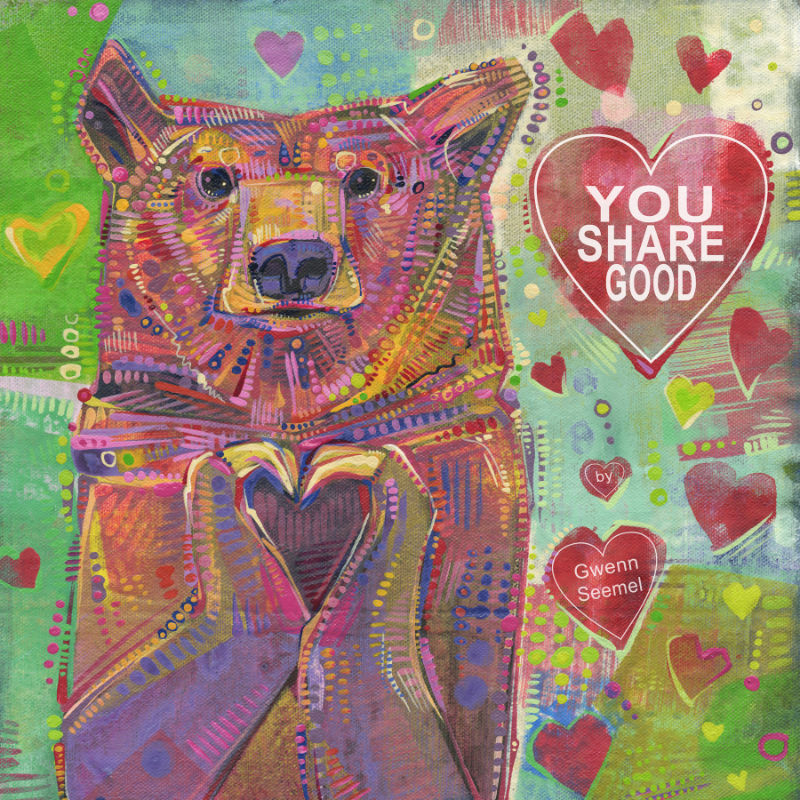Blog / 2016 / The Big Break Is a Myth.
March 24, 2016
The starving artist, the drunk or high artist, the diva artist, the boorish artist, the pretentious artist, the mentally unstable artist. None of these myths flatter or nurture our calling, but they’re not nearly so damaging as the one lie that most of us believe about our profession: that true artistic genius is recognized spontaneously, without any marketing efforts on the artist’s part.
The myth of the big break is the idea that someone or something is going to suddenly come into our lives and launch our careers into orbit in such a way that we will never again have to worry about promoting our work. It’s a powerful and persuasive piece of fiction because so many of us want it to be true. We want to believe it because we’d rather spend our time making art than marketing it.
But the truth is that your art career is a lot like your life. Both are a long hard slog. And while that may seem like a depressing way of looking at things, there is good news. In your art career, just like in life, you can choose to enjoy yourself along the way. In fact, if you’re failing to find the fun as you slog away at art and at life, you’re really missing out, because that’s the good part. And by that I mean the actual good part, instead of the fake, wannabe, burnout-begetting, so-called “good part” that is the mythical big break.
Some artists believe that one golden opportunity will change everything for them and so they refuse to recognize smaller opportunities at all. These creatives end up wasting a whole lot of emotional energy waiting on the big one. They may still be taking steps towards getting their work in front of an audience, but their belief in the big break that will make their career ends up hobbling them. They’re the kind of creative who says “if my art doesn’t take off in the next two years, I’ll get a real job.” They reign in their passion by assigning it an expiration date, and their desperate yearning for a prompt acknowledgment of their talents kills their creativity before it has a chance to really develop.
Others artists believe in the myth but still manage to be aware of the breaks they get. Nevertheless, they often find themselves tortured by a niggling sort of feeling that their breaks aren’t as big as they should be. Instead of celebrating joyously the things that have gone right in their careers, these creatives end up nursing a churlish disappointment.
I’ve fallen into the latter category before. In fact, it’s an attitude that’s easy to slip into and one that I have to be vigilant about to avoid. These are four methods I use to keep from getting sucked into the myth of the big break:
1. Define precisely what success means to you.
Setting a concrete goal is vital. If you don’t know exactly what you’re striving for, no opportunity will ever seem golden enough to you, and you’ll never be able to relish your triumphs. Your idea of success can and should evolve along with your career, but it’s important to always know where you’re headed at any given time.
For example: When I was starting out, success meant making enough money to eat, pay rent, and buy more art supplies.

As I got older I found that I needed to eat a bit better, live in a slightly nicer place, and buy supplies without counting my pennies in order to feel like I was doing well. In other words, my goals had expanded some, but they were not changing on a fundamental level. Success was still about money.
It wasn’t until more recently that I had a profound shift in my paradigm of success. Though I still define it in more practical and unromantic terms than some, my understanding of “making it” is at least no longer just about making my living as an artist. Instead, it’s about not having to audition anymore—for clients, venues, grants, or indeed any opportunity. For me, being a successful artist is about being invited as well as being paid. And keeping this in mind helps me avoid viewing the breaks I get as small or unworthy, because I can measure the opportunities against specific criteria and see that I am successful on my own terms.
2. Always be in the right place at the right time.
The right place is wherever your art is valued, and the right time is all the time. That means that you must make art regularly and you must also market it consistently if you ever expect your art to have any kind of impact. Of course the only way to promote your art on an ongoing basis is to find a way to do so that you actually enjoy, a way that is as creative as your art expression. Once the right place really feels right to you instead of just like some party you think you have to go to in order to be hip, you’ll happily hang out there all the time.
For example: A few years ago, I got an email from an art buyer at an advertising agency. The Gap wanted my art for an ad campaign. Specifically, the company was interested in a piece of American flag mail art I had posted on my blog. It ended up being featured as one square in a twelve-square layout that was a collage of Americana meant to sell the American-ness of the company abroad. (For more about that process go here.)

I’ve been keeping my blog for years now, and during all that time I never once thought “I’m doing this because I want some corporation to buy my images for an ad campaign one day.” I’ve blogged because not only is it a good way to show off my work, but it’s also an excellent platform for my ideas about art. It allows me to talk about the stuff I care about and, by talking publicly, I refine my way of thinking and become more precise about my ideas—explaining something to someone else has that magical quality of teaching the explainer at least as much as the explainee. What’s more, the blog invites viewers to engage with me, and that conversation is endlessly fruitful.
I’ve made my blog into a right place for me, so I’m there all the time. That means that, when the Gap showed up, I was ready. And even if that company hadn’t ever developed an interest in my work, plenty of other opportunities, both big and small, have come from my committed blogging.
3. Turn every opportunity into a direction over which you have some control.
By definition, a big break is external—something that comes to you instead of from you—and that can leave you feeling less than empowered. The best way to reboot and end this kind of hopeful stagnation is to own opportunities as fully as possible. Allow them to inspire new endeavors or leverage them to jump into a different mode of expression.
For example: In 2014, I was invited to speak at TEDxGeneva, a prestigious conference focused on freedom in the digital age. I was to explain some aspect of why I don’t claim the copyright on my art, and, in the process of preparing that talk, I realized I had a lot to say, so much that I could probably write a whole book on the topic. And that’s precisely what I did.

While the TEDx experience was gratifying, I’m not certain it would have felt like the success it truly was except that I also managed to get some serious momentum out of it. Without the book, I might have been expecting the organization’s promotional machine to carry me into all my future successes, and I would have been sorely disappointed. As it is, the opportunity was a great one that connected me with plenty of cool and totally inspiring professionals, but the best thing it did was to get me to write that book.
4. Recognize the importance of time observed.
You don’t become an artist overnight. Or rather, you may do so in your mind, but, to many, you will be just one more dabbler for years. And that has nothing to do with the quality of your work. You’re not seen as a dilettante because you’re not talented, but because plenty of people dip into art in a more focused way for a period of their life but eventually give up on it as a career. The consequence of this is that we’re all seen as almost certainly being not serious artists. The only way to combat this perception is to keep at it. The more that people see you doing your work, the more they’ll believe you’re committed and that you’re the real thing, and the less you’ll need the myth of the big break to sustain you.
For example: In 2010, my art was featured on a regional television show about art. I had been pursuing this outlet for a while, sending press releases to the station every time I had a major show, and it finally paid off when they realized I was in it for the long haul.
In 2011, I was invited to attend a prestigious conference in my role as an uncopyrighting advocate. The organizer had first encountered my art three years earlier, but it was only after watching my work for a while that he finally recognized all that I might be able to contribute to his event.

A few years back, I was offered a public art project by the city where I’d been living and working for over a decade. I hadn’t been looking to paint a mural, but the city pushed my career into this new space simply because it noted that I was clearly committed to this whole art thing.
These four tips all have one thing in common: they require a certain amount of stamina or a vision of your career that’s long term. If you think about it, that makes perfect sense. After all, the idea of the big break stems from the take-a-magic-pill-and-poof mentality that so much of advertising sells us on. Our society has been hypnotized into thinking that the quick fix is the route to fulfillment, but the truth is quite the opposite. Only with a more sustained approach do we get anything we want and manage to hold onto it.
When you try to skip over the tough parts you lose out in the long run. The most challenging parts of life and art are also the most rewarding ones, and it’s only when we understand how we achieved something—when we have agency in our own success—that we don’t worry about losing it.
PLEASE NOTE
This article was originally published in Professional Artist magazine, which I don’t write for anymore.
Maybe this post made you think of something you want to share with me? Or perhaps you have a question about my art? I’d love to hear from you!
To receive an email every time I publish a new article or video, sign up for my special mailing list.
If you enjoyed this post, Ko-fi allows you to donate. Every dollar you give is worth a bajillion to me!



